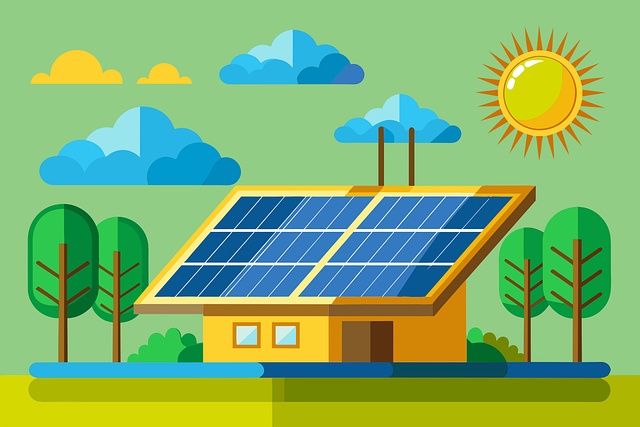“Power Your Choice: Weighing the Pros and Cons of Solar Battery Types for Optimal Energy Storage.”
Solar batteries are essential components of solar energy systems, enabling the storage of excess energy generated during the day for use at night or during periods of low sunlight. Various types of solar batteries, including lead-acid, lithium-ion, and flow batteries, each come with their own set of advantages and disadvantages. Understanding these pros and cons is crucial for homeowners and businesses looking to invest in solar energy solutions, as it can significantly impact efficiency, cost, lifespan, and overall performance of the solar power system. This exploration will provide insights into the characteristics of each battery type, helping consumers make informed decisions based on their specific energy needs and financial considerations.
Lithium-Ion Solar Batteries: Advantages and Disadvantages
Lithium-ion solar batteries have gained significant popularity in recent years, primarily due to their efficiency and versatility. One of the most notable advantages of lithium-ion batteries is their high energy density, which allows them to store more energy in a smaller space compared to other battery types. This characteristic makes them particularly appealing for residential solar energy systems, where space can often be at a premium. Additionally, lithium-ion batteries have a longer lifespan, typically lasting between 10 to 15 years, which means that homeowners can enjoy the benefits of their investment for a more extended period without the need for frequent replacements.
Moreover, lithium-ion batteries exhibit a relatively low self-discharge rate, which means they can retain their charge for longer periods when not in use. This feature is particularly beneficial for users who may not consume energy immediately after it is generated. Furthermore, the efficiency of lithium-ion batteries is impressive, with charge and discharge efficiencies often exceeding 90%. This high efficiency translates to less energy loss during the storage and retrieval processes, making them an economically viable option for solar energy storage.
However, despite these advantages, there are also notable disadvantages associated with lithium-ion solar batteries. One of the primary concerns is their cost. While prices have been decreasing over the years, lithium-ion batteries still represent a significant investment compared to other battery technologies, such as lead-acid batteries. This initial expense can be a barrier for some homeowners, particularly those who are looking for more budget-friendly options. Additionally, the cost of installation and maintenance can further add to the overall financial commitment.
Another disadvantage is the environmental impact associated with lithium-ion battery production and disposal. The extraction of lithium and other materials used in these batteries can lead to ecological degradation and pollution. Furthermore, while recycling programs for lithium-ion batteries are becoming more prevalent, the recycling process is not yet as efficient or widespread as it could be. This raises concerns about the long-term sustainability of lithium-ion technology, especially as demand for renewable energy solutions continues to grow.
In addition to environmental concerns, lithium-ion batteries can also pose safety risks. Although rare, incidents of overheating and fires have been reported, particularly when batteries are improperly managed or manufactured. This potential for thermal runaway can be alarming for consumers, leading to hesitance in adopting this technology. However, it is essential to note that advancements in battery management systems and safety protocols are continually being developed to mitigate these risks.
In conclusion, lithium-ion solar batteries present a compelling option for energy storage, offering numerous advantages such as high energy density, long lifespan, and impressive efficiency. However, these benefits must be weighed against the disadvantages, including higher costs, environmental concerns, and safety risks. As the solar energy market continues to evolve, it is crucial for consumers to consider their specific needs and circumstances when evaluating whether lithium-ion batteries are the right choice for their solar energy systems. By understanding both the pros and cons, homeowners can make informed decisions that align with their energy goals and values.
Lead-Acid Solar Batteries: Pros and Cons

Lead-acid solar batteries have long been a staple in the renewable energy sector, primarily due to their affordability and established technology. These batteries come in two main types: flooded lead-acid and sealed lead-acid, each with its own set of advantages and disadvantages. Understanding these pros and cons is essential for anyone considering solar energy storage solutions.
One of the most significant advantages of lead-acid batteries is their cost-effectiveness. Compared to other battery technologies, such as lithium-ion, lead-acid batteries are generally much cheaper to purchase. This affordability makes them an attractive option for homeowners and businesses looking to invest in solar energy without breaking the bank. Additionally, lead-acid batteries have a long history of use, which means that they are widely available and supported by a robust network of manufacturers and suppliers. This established market can provide peace of mind for consumers, knowing that replacement parts and service are readily accessible.
Moreover, lead-acid batteries are known for their reliability and durability. They can withstand a range of environmental conditions, making them suitable for various applications, from residential solar systems to larger commercial setups. Flooded lead-acid batteries, in particular, are designed to handle deep discharges, which can be beneficial in situations where energy demand fluctuates significantly. Furthermore, these batteries can be recycled, contributing to a more sustainable approach to energy storage.
However, despite these advantages, lead-acid batteries also come with notable drawbacks. One of the primary concerns is their relatively short lifespan compared to newer technologies like lithium-ion batteries. Typically, lead-acid batteries last between three to five years, while lithium-ion options can last up to 15 years or more. This shorter lifespan means that users may need to replace lead-acid batteries more frequently, which can offset their initial cost savings over time.
Another significant disadvantage is their lower energy density. Lead-acid batteries are bulkier and heavier than their lithium-ion counterparts, which can be a critical factor for those with limited space for installation. This lower energy density also means that lead-acid batteries require more frequent recharging, particularly in systems that experience high energy demands. Consequently, users may find themselves needing to invest in additional batteries to meet their energy needs, further complicating the overall system design.
Additionally, lead-acid batteries require regular maintenance, particularly the flooded type, which needs periodic watering to ensure optimal performance. This maintenance requirement can be a deterrent for some users who prefer a more hands-off approach to energy storage. Sealed lead-acid batteries, while requiring less maintenance, can still suffer from issues such as sulfation, which can reduce their efficiency and lifespan if not managed properly.
In conclusion, lead-acid solar batteries present a mixed bag of benefits and challenges. Their affordability and reliability make them a popular choice for many, particularly those on a budget or in need of a proven technology. However, their shorter lifespan, lower energy density, and maintenance requirements can pose significant drawbacks. Ultimately, the decision to use lead-acid batteries should be based on individual energy needs, budget constraints, and willingness to engage in regular maintenance. By carefully weighing these factors, consumers can make informed choices that align with their solar energy goals.
Flow Batteries for Solar Energy: Benefits and Drawbacks
Flow batteries have emerged as a compelling option for solar energy storage, offering unique advantages and certain limitations that warrant careful consideration. Unlike traditional lithium-ion batteries, flow batteries operate on a different principle, utilizing two electrolyte solutions that flow through a cell to generate electricity. This fundamental design allows for scalability and flexibility, making flow batteries particularly appealing for large-scale solar energy systems.
One of the most significant benefits of flow batteries is their ability to provide long-duration energy storage. While lithium-ion batteries typically excel in short-term applications, flow batteries can discharge energy over extended periods, making them ideal for balancing intermittent solar generation with energy demand. This characteristic is especially valuable in regions where solar energy production may not align perfectly with consumption patterns, such as during cloudy days or at night. Consequently, flow batteries can enhance the reliability of solar energy systems, ensuring a steady supply of power even when sunlight is not available.
Moreover, flow batteries boast a longer lifespan compared to their lithium-ion counterparts. The chemical reactions in flow batteries occur in a way that minimizes degradation, allowing them to endure thousands of charge and discharge cycles without significant loss of capacity. This longevity translates to lower replacement costs over time, making flow batteries a more sustainable choice for long-term energy storage solutions. Additionally, their modular design allows for easy scaling; users can increase storage capacity simply by adding more electrolyte tanks, which can be particularly advantageous for growing energy needs.
However, despite these benefits, flow batteries also come with certain drawbacks that must be acknowledged. One of the primary challenges is their relatively high upfront cost. The materials and technology involved in flow battery systems can be expensive, which may deter some potential users, especially in comparison to more established battery technologies like lithium-ion. While the long-term savings may offset these initial costs, the financial barrier can be a significant consideration for many homeowners and businesses looking to invest in solar energy storage.
Another limitation of flow batteries is their lower energy density. This means that flow batteries require more space to store the same amount of energy as lithium-ion batteries. For applications where space is at a premium, such as residential installations, this can pose a significant challenge. The larger footprint of flow battery systems may not be practical for all users, particularly in urban environments where real estate is limited.
Furthermore, the complexity of flow battery systems can also be a drawback. The need for pumps, tanks, and additional components can complicate installation and maintenance, potentially leading to higher operational costs. Users must also consider the potential for leaks or other mechanical failures, which, while generally rare, can pose risks in certain applications.
In conclusion, flow batteries present a unique set of benefits and drawbacks for solar energy storage. Their ability to provide long-duration storage and longer lifespans makes them an attractive option for large-scale applications, while their higher costs and space requirements may limit their appeal for smaller installations. As the renewable energy landscape continues to evolve, understanding the nuances of different battery technologies, including flow batteries, will be essential for making informed decisions about energy storage solutions.
Nickel-Cadmium Solar Batteries: Strengths and Weaknesses
Nickel-cadmium (NiCd) solar batteries have been a staple in the renewable energy sector for several decades, primarily due to their unique characteristics that set them apart from other battery types. One of the most significant strengths of NiCd batteries is their durability. These batteries are known for their ability to withstand extreme temperatures, making them suitable for a variety of climates. This resilience means that they can perform well in both hot and cold environments, which is particularly advantageous for solar energy systems that may be installed in diverse geographical locations.
Moreover, NiCd batteries have a long cycle life, often exceeding that of other battery technologies. This longevity translates to fewer replacements over time, which can be a cost-effective solution for users who rely on solar energy. Additionally, NiCd batteries exhibit a high discharge rate, allowing them to deliver power quickly when needed. This feature is particularly beneficial for applications that require bursts of energy, such as powering appliances during peak usage times. Furthermore, they are less susceptible to damage from overcharging, which can be a common issue with other battery types. This characteristic not only enhances their reliability but also reduces the need for complex charging systems.
However, despite these advantages, NiCd batteries are not without their drawbacks. One of the most significant concerns is their environmental impact. Nickel and cadmium are both toxic materials, and improper disposal of these batteries can lead to soil and water contamination. This environmental risk has led to increased scrutiny and regulation regarding the use and disposal of NiCd batteries, which can complicate their adoption in some regions. Additionally, the production of NiCd batteries involves a significant amount of energy and resources, raising questions about their overall sustainability compared to other battery technologies.
Another notable weakness of NiCd batteries is their relatively low energy density. While they can deliver power quickly, they do not store as much energy as lithium-ion or lead-acid batteries. This limitation means that users may require more NiCd batteries to achieve the same energy storage capacity, which can increase the overall system size and complexity. Furthermore, the self-discharge rate of NiCd batteries is higher than that of some other battery types, meaning they can lose charge more quickly when not in use. This characteristic can be a disadvantage for users who rely on stored energy during periods of low sunlight.
In addition to these technical considerations, the cost of NiCd batteries can also be a factor in their overall appeal. While they may offer long-term savings due to their durability and longevity, the initial investment can be higher than that of other battery types. This upfront cost can deter some users, particularly those who are new to solar energy systems and may be more inclined to opt for more affordable alternatives.
In conclusion, nickel-cadmium solar batteries present a mixed bag of strengths and weaknesses. Their durability, long cycle life, and high discharge rates make them a viable option for certain applications, particularly in challenging environments. However, concerns regarding environmental impact, energy density, and cost must be carefully weighed against these benefits. As the solar energy market continues to evolve, users must consider their specific needs and circumstances when deciding whether NiCd batteries are the right choice for their solar energy systems.
Q&A
1. **Question:** What are the pros of lithium-ion solar batteries?
**Answer:** Lithium-ion solar batteries have a high energy density, longer lifespan, faster charging times, and lower maintenance requirements compared to other types.
2. **Question:** What are the cons of lithium-ion solar batteries?
**Answer:** Lithium-ion batteries can be more expensive upfront, are sensitive to temperature extremes, and may pose safety risks if damaged.
3. **Question:** What are the pros of lead-acid solar batteries?
**Answer:** Lead-acid batteries are generally more affordable, widely available, and have a proven track record in various applications.
4. **Question:** What are the cons of lead-acid solar batteries?
**Answer:** Lead-acid batteries have a shorter lifespan, lower energy density, require regular maintenance, and can be heavier and bulkier than other options.
Conclusion
In conclusion, the choice of solar batteries involves weighing various pros and cons. Lithium-ion batteries offer high energy density, longer lifespan, and faster charging times, making them ideal for residential use, but they come with a higher upfront cost. Lead-acid batteries are more affordable and have a proven track record, but they have a shorter lifespan and lower efficiency. Flow batteries provide scalability and long cycle life, yet they are still relatively new and can be expensive. Ultimately, the best option depends on individual energy needs, budget, and long-term goals for solar energy storage.




